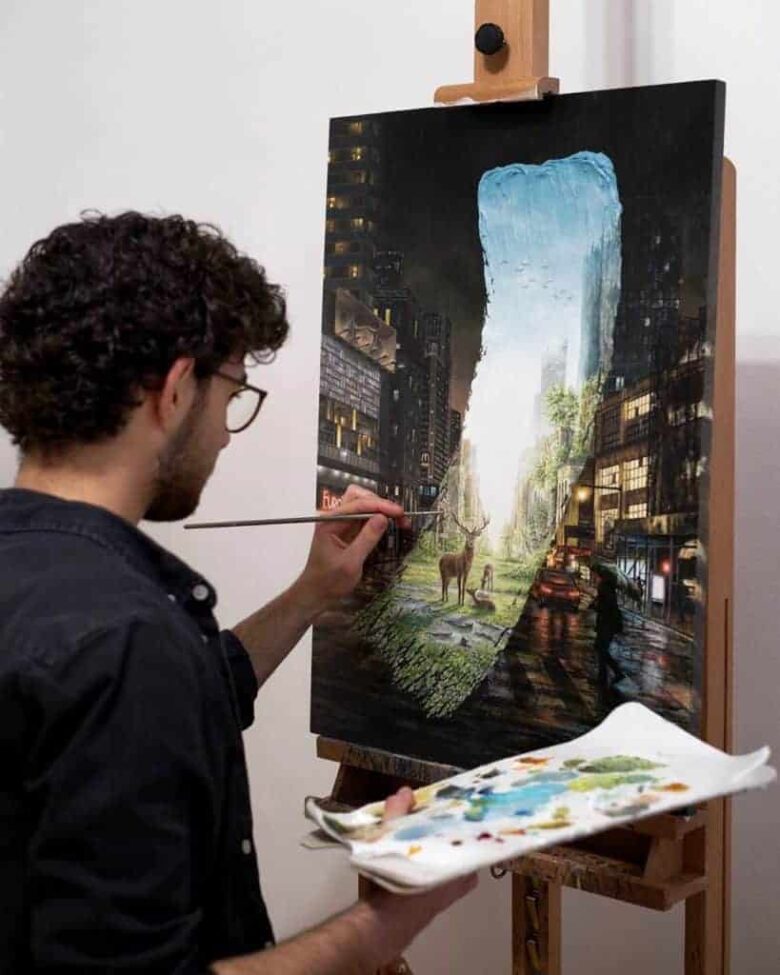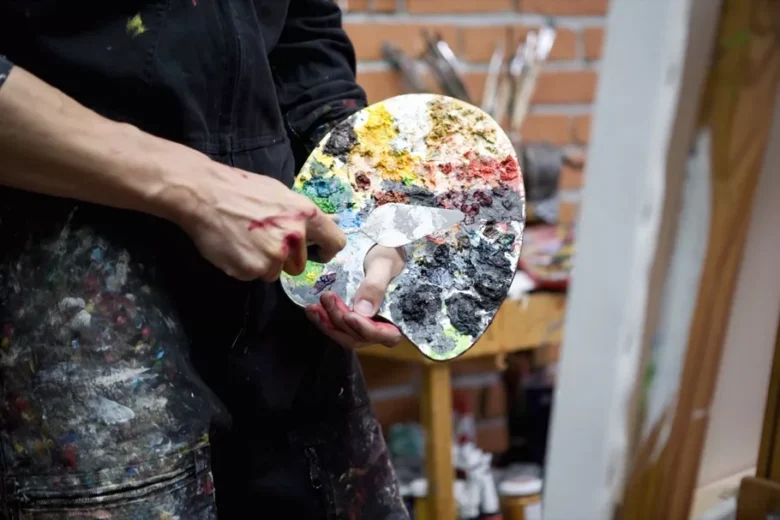Oil painting is considered a noble painting. Anyone who has ever attempted to paint a picture in oil paint has encountered certain difficulties. It is a difficult painting to master, which requires practice and know-how. Want to know more? Here is everything you need to know about this painting technique.
Contents
What is the origin of oil painting?
It was at the end of the Middle Ages, in Flanders and the southern Netherlands, that oil painting appeared. It gradually replaced the tempera technique and spread from the North to the South of the West. Over the centuries, oil-based paint has undergone significant evolutions and changes.
The 19th century, then the 20th century, revolutionized the composition and use of this technique, thanks to technical progress and artistic upheavals, which brought new ways of painting. You can visit here for some famous oil paintings to have an idea of what they really are and sample the world’s best.

Source: artwoonz.com
What is the composition of oil paint?
Oil-based paints are always composed of:
- Pigments to give the colored material
- Binder to agglomerate the components
The binders can be different: linseed oil is the most common binder, but there is also poppyseed oil, safflower oil, or good walnut oil.
Thanks to the binder, the paint dries by the phenomenon of oxidation of the oil in the paint, which allows it to harden and trap the pigments without changing the appearance of the colors on the canvas. Substances exist to speed up the drying time of oil paint. Some painters used white lead, which is toxic, and added it to the composition to promote drying.
The dough can be modified. These mediums can add flexibility, material, etc., to modify the consistency and the effects obtained on an oil painting. As a general rule, using resins in the paint makes it more durable because they prevent the main paint layer from degrading too quickly. Paintings over 500 years old are still in good condition today, relative to their age, thanks to the use of oil and resin-based paint.
While waiting for the appearance of the flexible paint tube in the 19th century, artists made their own mixtures in their workshops.
Characteristics of oil painting
Oil painting has particular, easily recognizable characteristics.
What are these characteristics?
This is a paint that takes a long time to dry. An oil painting can dry in a few weeks or several months, even in several years, depending on the number of layers placed on the canvas, the thickness, and the oil content. In reality, the paste does not dry out. It hardens little by little.
It is advisable to paint an oil painting in thin layers so that the painting can dry quite quickly. You should only apply a new coat of paint once the first coat is hard and dry. Otherwise, an oil painting picture may fail to dry. It is also always recommended to paint “fat on lean,” that is to say, to apply a layer of paint that is always fatter than the previous one.
Oil-based paint is very glossy compared to other types of paint. This shine is due to the presence of oil in the composition; the more oil, the shinier and brighter the paint will be. Other effects can be obtained, in particular at the level of the consistency of the paste, using resins and other mediums.
Oil painting is, therefore, a painting that allows you to take your time, to achieve many details. It is truly different from acrylic paint or watercolor.

Source: artincontext.org
Advantages of oil painting
- You can take your time, carry out very meticulous small details, make touch-ups, and correct errors without rushing.
- The paintings last over time and have very good conservation over the years and centuries.
- It is a noble and historical painting that evokes the great names of the history of art and the masterpieces of painting.
- The compositions of painting oils are varied. It is possible to paint any type of subject (still paintings, portraits, landscapes, genre paintings, historical paintings, abstract paintings, etc.)
- Renderings and effects on the canvas are very beautiful (gloss, colors, glazes, varnishes, etc.)
What mediums to choose for oil painting?
There are several types of auxiliaries that you can use to make an oil painting:
The oil:
Oil is added with the oil-based paint so that you can work “fat on lean” (i.e., start with a non-oily coat, add a little oil for the second coat, a little more for the third, etc.), namely that the richer a paint is in oil, the slower it will dry.
The driers:
You can use an oil drying agent to speed up the drying time of your painting, but these products should be used in moderation (between 1% and 5% of your paint, i.e., 2 or 3 drops of the drying agent).
Gasoline:
Turpentine allows you to dilute oil paint and therefore reduce the oil content of your paint and use a “leaner” paste.
The different mediums:
There are few painting mediums for oil paint compared to acrylic, but you will still find mediums to speed drying, increase the gloss or transparency of your paint, glazes, etc.
The nail polish:
There are retouching varnishes and final varnishes for your oil painting; the retouching varnish allows you to correct an area of the painting and the final varnish is essential to protect your painting from time, dust, and pollution so that it can be kept for as long as possible.

Source: artincontext.org
What material to use for oil painting?
We advise you to favor quality material to make an oil painting. Kits for beginners (paints or brushes) are often of poor quality and do not allow you to work well. Do not neglect the amount of white paint. You will often need it. Always have primary colors and secondary colors in stock so that you can make all possible shades.
Finally, buy quality brushes, cutters, brushes with soft bristles, and others with hard bristles to be able to vary the effects and find what suits you best. Not to mention linseed oil and turpentine, two essential products!
